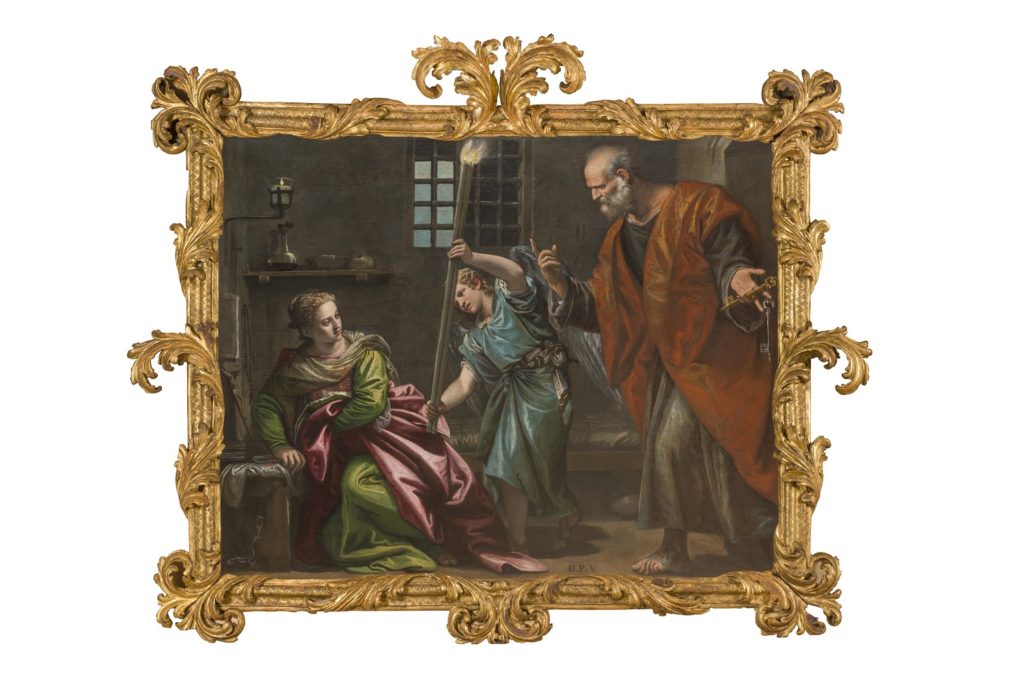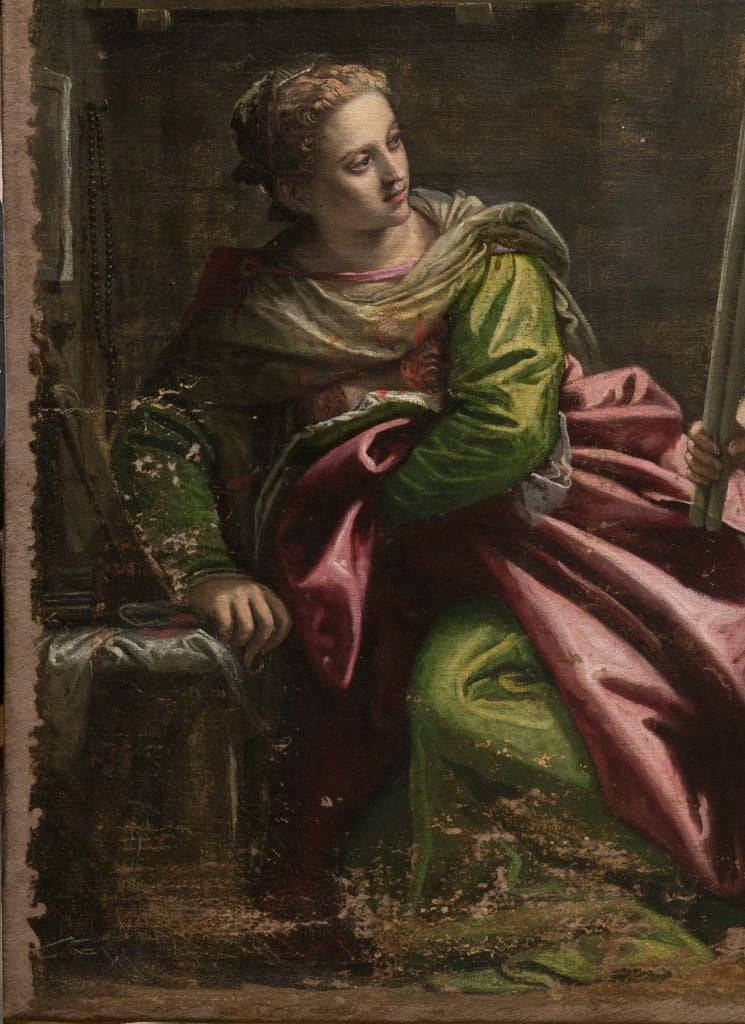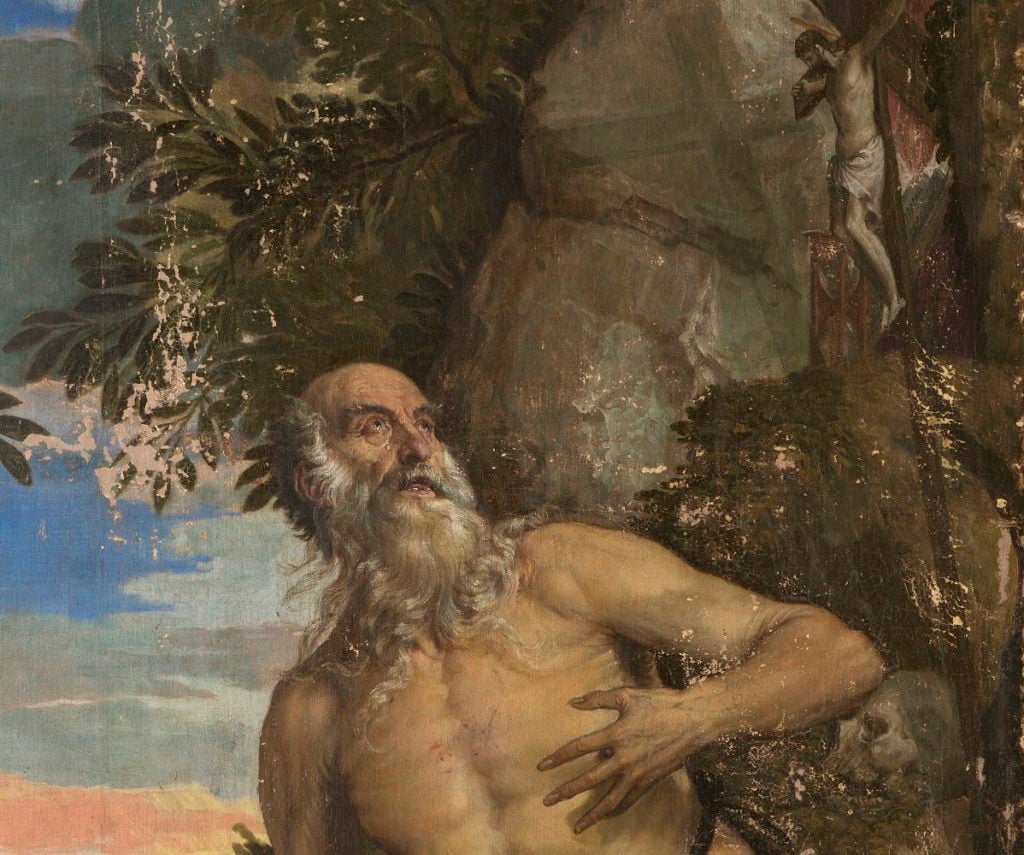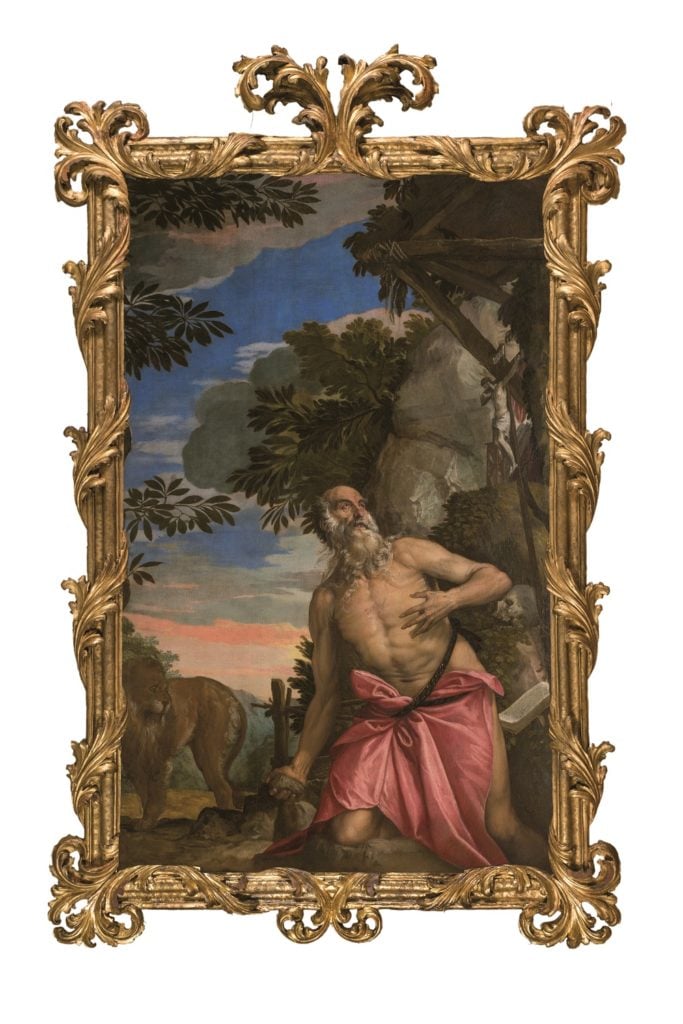Art World
Two Long-Hidden Veronese Paintings, Restored to Their Former Splendor, Head to the Venice Biennale
Venetian Heritage and Bulgari undertook the project, which revealed new information about the paintings' importance.

Venetian Heritage and Bulgari undertook the project, which revealed new information about the paintings' importance.

Alyssa Buffenstein

A recent restoration of two paintings by Renaissance master Paolo Veronese, previously hidden away in a remote church in Murano, Italy, has revealed their long-hidden splendor. Thanks to the efforts of the Venetian Heritage restoration team, previous botched attempts at conservation have been rectified, scholarship has been devoted to the works at last, and they are slated to go on view internationally for the first time since their creation in 1566—first during the Venice Biennale, and then at the Frick Collection New York.
Commissioned by Francesco degli Alberi, the abbot of the church of Saint Mary of the Angels in Murano, Saint Jerome in the Desert and Saint Agatha Visited in Prison by Saint Peter have never left the island complex that lies just north of Venice. First housed in the Church of Saint Mary of the Angels, the paintings were moved to the nearby church of San Pietro in the 19th century, when scholars believe they were given elaborate, gilded frames.

Detail of Paolo Veronese, Saint Agatha Visited in Prison by Saint Peter (1566) before restoration. Photo courtesy Bulgari and Venetian Heritage.
Somewhere along the way, they were the victims of bad restoration, given an excess of varnish that, over time, began to oxidize, turning green and diminishing their vivid colors. Toto Bergamo Rossi, President of Venetian Heritage, tells artnet News that additionally, the church of San Pietro itself was in bad shape. A leaky roof subjected the paintings, as well as their gilded frames, to damage from rainwater.
The restoration process, he explains, involved removing the varnish and meticulously repainting some damaged zones. “So,” he says, “it is not only a conservation project but a rediscovery of two not very well known masterpieces. We rediscovered the amazing quality of the two paintings.”
While Saint Jerome in the Desert has always been attributed to Veronese himself, Saint Agatha Visited in Prison by Saint Peter was thought to have been created by the master and his assistants. But now, scholars think otherwise.

Detail of Paolo Veronese, Saint Jerome in the Desert (1566), before restoration. Photo courtesy Bulgari and Venetian Heritage.
“Now that it has been cleaned, even Xavier Salomon, chief curator of the Frick and specialist on Veronese, said that it is a work by the big Maestro,” Rossi says.
The restoration was made possible by Bulgari. The luxury brand has a serious commitment to preserving Italian cultural heritage, especially in Rome, where the brand is based. Lucia Boscaini, Bulgari’s Brand and Heritage Curator, tells artnet News that the art and architecture of the “Eternal City” has served as inspiration for the brand’s designers over the years, from the Pantheon’s coffered ceiling inspiring a gold and diamond necklace, to the mosaic floor of the Caracalla Baths—another piece of heritage that was restored with funding by Bulgari—inspiring the recent “Divas’ Dream” collection.
As for the newest restoration project, Boscaini underscores Veronese’s importance, both to Bulgari and Italian heritage in general. He says: “Paolo Veronese is one of the Masters of the Renaissance, a key period in which Italy became the recognized European leader in art and architecture.”

Paolo Veronese, Saint Jerome in the Desert (1566), after restoration. Photo courtesy Bulgari and Venetian Heritage.
The paintings will go on view at the at the Gallerie dell’Accademia in Venice on May 11, to coincide with the Venice Biennale. Then, on October 24, they will travel to the Frick Collection in New York.